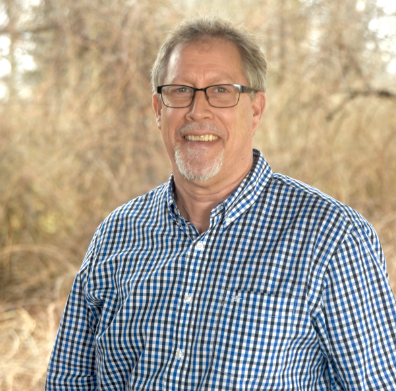 Terry Shue is director of Leadership Development for Mennonite Church USA.
Terry Shue is director of Leadership Development for Mennonite Church USA.
My backyard adjoins three of my neighbors’ properties, each one with a different type of boundary. One is a six-foot-high solid wooden fence; the other boundary is made up of nice groupings of trees and a grape trellis; and the third is a less clearly defined border, creating a neighborly guessing game of who mows what. Surrounding all of this is yet another boundary, one that cannot be seen, but one our dog, Bria, remembers well — the shocking invisible fence. Rarely do we think about boundaries like these or the role they play in our development, but we understand that to ignore them is folly.
Fences and boundaries serve an important role.
Gathered with others from 13 area conferences across Mennonite Church USA, we came together last week in an effort to help make the church a safer and healthier environment for everyone through teachings on the importance of boundaries for ministerial leaders. Some of the participants were professional counselors, some were social workers, others were on credentialing bodies from their area conference and some serve as conference ministers. We were all there as part of a recent commitment by Mennonite church USA to work proactively at the issue of ministerial sexual abuse. We contracted with facilitators from FaithTrust, a national training organization with 45 years of experience, to work with us for two days to train trainers on this topic. These trainers will go out into the congregations and conferences to teach clergy and other lay leaders about the need for healthy boundaries in ministry.
Recent episodes of ministerial misconduct in our system have again alerted us to the ongoing task of making our congregations a safe place for everyone — both children and adults. As a long time pastor and now as a denominational leader, I am very aware that this topic has not always received the attention that it has deserved.
Too often our family-oriented and often male-led congregations have refused to acknowledge the reality of pastoral abuse and minimized the harm this abuse has done, while too often blaming the victim at the same time.
The net effect has been to shame other victims into silence while giving the signal that while not appropriate, this abuse is just another sin among many in the church.
For those of us who have experienced the pain of ministerial sexual misconduct, as I have, we understand that the pain goes well beyond individual victims and survivors; it affects generations of families as well as the whole system of a congregation. Sexualized behavior between a pastor and someone in the congregation they are not married to, is more than a moral sin it is always an abuse of power that the pastor is responsible to both prevent and to stop.
In the leadership development office of Mennonite Church USA, Nancy Kauffmann and I have given considerable energy and effort to prepare conferences to deal with ministerial sexual misconduct. Our recent polity handbook, A Shared Understanding of Ministerial Leadership and the newly revised Ministerial Sexual Misconduct Policy and Procedure are two examples we offer to the church. Though not perfect, these statements represent the wisdom of a wide spectrum of conference leaders, survivors and professionals from across our denomination.
But it was in the proactive Healthy Boundaries training with FaithTrust Institute recently that I find the greatest hope for our desire to provide a healthy and safe environment in every one of our congregations. Our facilitators helped give us language as we began to unravel the complexity of ministerial relationships and name boundaries within a congregation. Some of these boundaries were clear and unequivocal; others when presented, caused moments of pause as we pondered and then discussed at tables.
At the root of healthy boundaries is the awareness of the real power that a pastor has which must be understood and acknowledged.
A power which is like fire, not inherently good or bad, but an influential force which a pastor may not, and indeed cannot, lay aside while in active ministry. It is the misuse of this power which is at the root of all ministerial sexual misconduct.
Our way forward to a safer and healthier local congregation is to name this power and to identify, clarify and talk about healthy boundaries for our pastors and lay leaders at every level. Congregations must also be trained and aware of these boundaries and be willing to hold pastors accountable to tend to them.
Towards the end of having healthy congregations and pastors, it is the intent of our leadership development office that every new pastor in Mennonite Church USA have boundary training within the first year of pastoral ministry and for all of our pastors to receive the training within the next three years, updating it subsequently every three years. Realizing that the conferences which make up Mennonite Church USA are very diverse with different levels of expectations connected to credentials, we desire to raise the bar of trust by all of our conferences — large and small — to take concrete steps to require boundary training as a part of retaining an active status of any and all credentials they hold. This training is not only to protect potential victims; it is also in the best interest of our pastors and congregations, keeping them safe and healthy.

